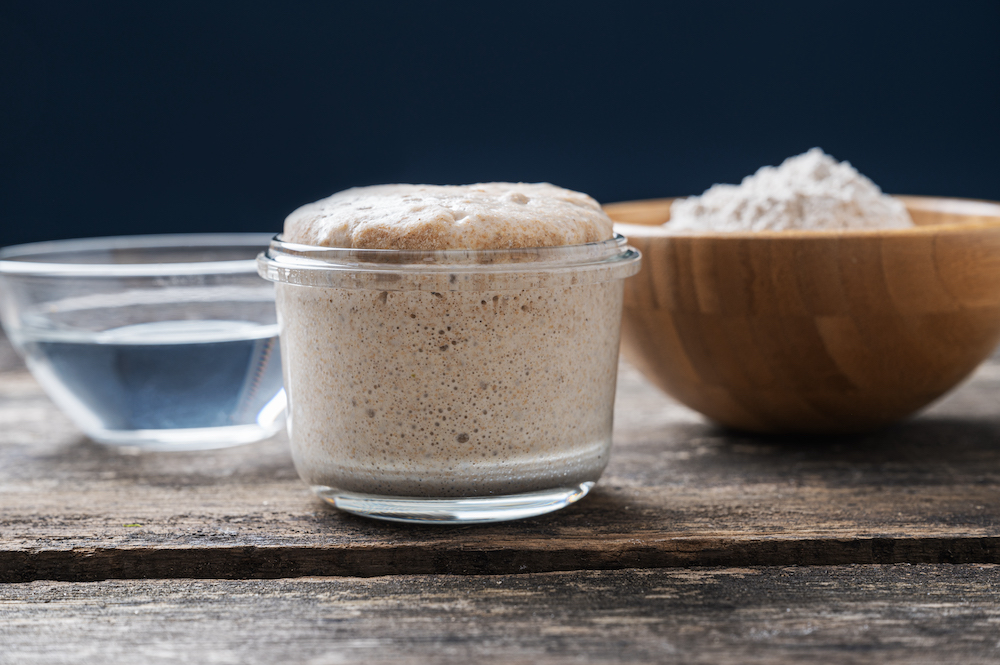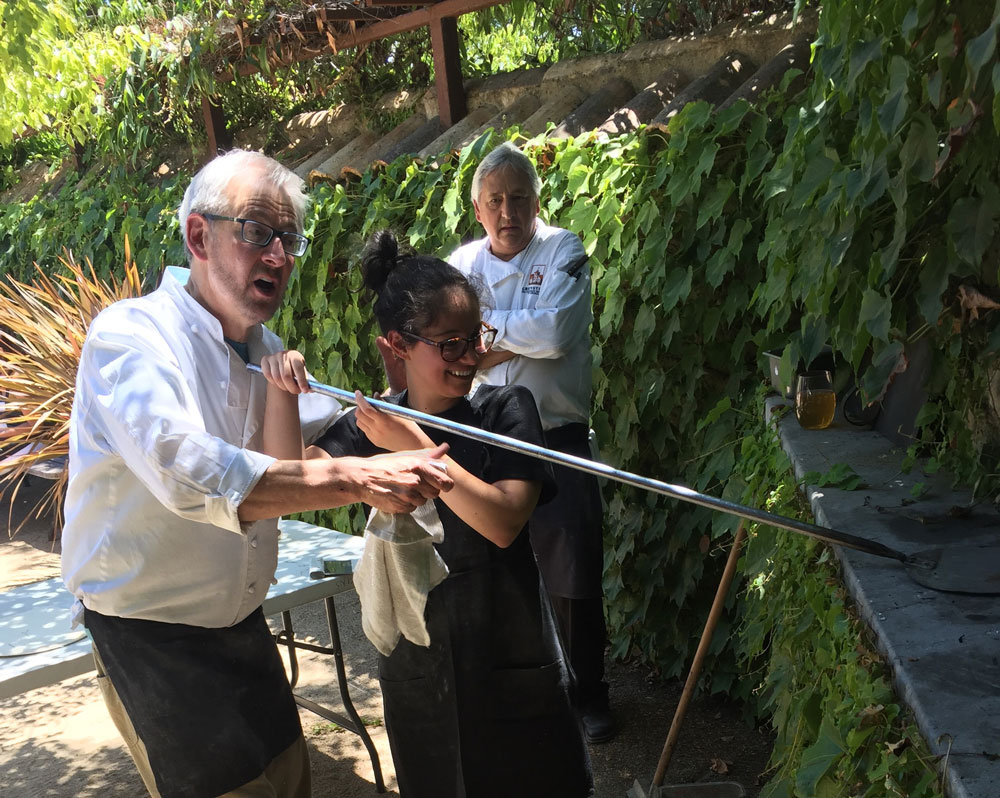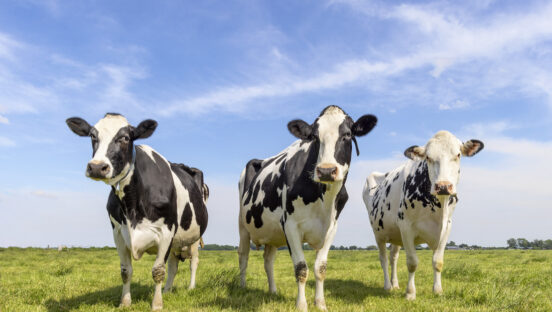If you live long enough, you find that history is often cyclical. Trends, fads and fashions of one era tend to re-emerge decades later, captivating an entirely new audience. One long-overlooked art rose to prominence once again during the COVID-19 lockdown, although it never quite went away in the first place: the art of sourdough bread starters. During the pandemic, many home bakers took to the kitchen to figure out how to create the yeasty beast known as a fluffy, tasty sourdough loaf, known for its distinct aroma and array of flavors and textures.
Michael Kalanty, author of How to Bake Bread and How to Bake More Bread, sat down with PMQ’s Brian Hernandez to go over some of the ins and outs of sourdough creation. He’s the former executive bread baker for Le Cordon Bleu, a network of culinary and hospitality schools, and is currently an independent product developer for the baking industry who works with Johnson & Wales University.
He’s also the creator of a truly cosmopolitan piece of sourdough housed at the International Sourdough Library. In other words, Kalanty knows what it takes to bring your own starter to life. In this Q&A, he generously shares his sourdough secrets with the pizza restaurant industry.
Related: How to improve your pizza crust’s flavor with minimal effort

Getty Images
PMQ: What do you need to make a sourdough starter?
Kalanty: It’s actually a very simple 10-day process. Your starter will be equal parts water and flour. Here’s how you do it:
Day 1: Let’s start with 100g of water. You should use 80°F to 90°F water to kick-start the birth of your starter and give it a nice warm place to incubate for the first week of its life. If the temperature of the flour is warmer than that, use a little cooler water to get to that Goldilocks zone of 85°F (or vice versa if the flour is cooler). Now we need some kind of natural yeast ingredient to go in and start the process. You can find this on the outside of vegetables, fruits and grains. I like to use raisins—they have millions of wild yeast cells on their skins. So I put in a handful of raisins. Then you add 100g of flour. Stir it up, and there you go! Basically, we are giving wild yeast an environment in which to multiply. Then you put a lid on it and leave it at room temperature. Just stir it occasionally to get more air for the yeast and to help distribute everything in the starter.
Day 2: The next day, you should take out half of your starter. Let’s say we have 200g. Remove 100g of starter and add another 100g each of flour and water, giving you 300g of starter. You always match the amount of flour to the amount of starter left in the container. Then add that same amount of water. Mix it, then let it begin the process again.
Days 3 to 10: Take out 200g from your starter, then add another 100g each of flour and water. Mix and refrigerate again. Repeat this step for about 10 to 12 days, and then you should have a nice, ripe, aromatic starter reminiscent of the days of old. After about five or six days at room temperature, you will start to see some bubbles forming. Don’t rush to refrigerate it just yet. Wait a day or so, until you see reliable bubbling. In other words, when you refeed it, make sure you see bubbles again the next day before you refrigerate it. Otherwise, you retard the whole process. Once it’s formed and growing reliably, make sure it stays refrigerated after that.

Michael Kalanty teaches a class at the Ramekins Cooking School in Sonoma, California.
PMQ: Now we have a starter. How do we use it?
Kalanty: It partially becomes some of the yeast in your dough, but it also brings along the flavor and texture of sourdough. You can use as little or as much as you want. At this point, it’s more akin to an ingredient for your pizza.
Related: How to achieve the perfect dough mix
PMQ: Does sourdough have a big effect on the taste and texture of your pizza?
Kalanty: Using sourdough in your pizza does change the flavor profile and the texture. It makes the dough more tart or “sour.” This could, of course, affect what items you put on your pie, but it definitely adds a layer of flavor. It also changes the texture. It lowers the crispiness of the crust after baking. Don’t get me wrong: It’s not like a supermarket dinner roll, but it’s not a crispy cracker either. Adding a good sourdough starter to your dough will get you a longer, softer chew from your crust or breads.
PMQ: Is there a basic dough formula for how much starter to use?
Kalanty: There is. Of course, you can use as much or as little as you like, but here’s a good starting formula for beginners. You want to take your current baker’s percent formula and add 20% starter. Since our starter addition is basically 10% each of our flour and water measurements, take equal amounts of flour and water out of your regular baker’s percent formula.
So, for example, you would go from:
- Flour: 100%
- Water: 60%
- Yeast: 0.10%
- Salt: 1.5%
To:
- Flour: 90%
- Water: 50%
- Starter: 20%
- Yeast: 0.10%
- Salt: 1.5%
You can adjust the yeast and salt to get different rises and flavors, but, for now, this formula will be a great starting point for all of the rising artisan bakers out there.

PMQ: How long does your dough need to proof if you are using a sourdough starter?
Kalanty: A correlative line can be drawn between how much starter was used and fermentation time. The less sourdough starter, the longer you can ferment. The fermentation time goes down according to how much starter is used. If you use 50% starter, you can be ready to go in six hours. Forty percent can proof for 24 hours, 30% for 36 hours and so on. For every 10% of starter you use, you forgo 12 hours of proof time. The science behind the “less for longer” fermentation model is that, if you are using 50% starter, then you truly only have about 75% dry flour. The longer you proof, the more the yeast in the starter eats, eventually exhausting the flour supply. This leaves you with a giant colony of yeast and no dough.
Related: How to achieve the perfect pizza crust edge
PMQ: What happens if someone has to go on a trip and can’t feed the starter?
Kalanty: You can absolutely freeze your starter. They are quite easy to reactivate and start up again. Just thaw it out, then halve it and feed it for three days like in the beginning of the starter process, and the creature will come back to life. It can live forever as long as you feed it and maintain it between uses.

PMQ: I have to ask, what is Lucky Lady #99?
Kalanty: It’s my sourdough starter in the Sourdough Library in St. Vith, Belgium. It was named after my faithful beagle, Lady, who came with me 27 years ago to San Francisco. It is also #99 in the library in Belgium. I went to Napa and got some organic grapes, put it in some water and added some flour, and that was 27 years ago. Don’t tell the Transportation Security Administration, but I would sneak her on a plane and add to her in places like Italy and Germany, where she would collect local bacteria and yeast. She is very much a worldly starter. It truly is an honor to have my work preserved for the ages.
Brian Hernandez is PMQ’s test chef and coordinator of the U.S. Pizza Team.













